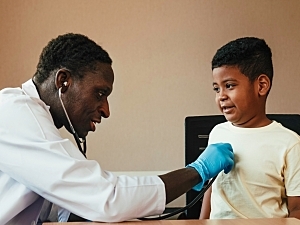Many children have difficulties swallowing tablets, and strategies used to address that problem have key limitations. Many drugs are water-insoluble and can’t be formulated as a solution or syrup. Ethanol is a common co-solvent, but its use must be limited in pediatric formulations. Crushing pills can introduce variability and their suspension requires a source of clean water. Extemporaneous suspensions made from tablet and pre-formulated suspensions must also be shaken to ensure consistent dosing.
Giovanni Traverso, MD, PhD, MBBCH, a gastroenterologist and biomedical engineer, and Ameya Kirtane, PhD, a pharmaceutical scientist, both in in the Division of Gastroenterology, Hepatology and Endoscopy at Brigham and Women’s Hospital and MIT, and colleagues have developed oleogels—gels made from food-based oils—that can be used to deliver drugs to children. In Science Advances, they report oleogels may perform similarly to or better than commercial tablets.
Oleogel Characteristics
The research team was particularly interested in developing drug formulations for newborns, infants, and young children that will be useful in resource-limited regions. They aimed for several key characteristics:
- Oral or rectal dosing
- No large solid for children to swallow
- Compatible with hydrophobic and hydrophilic drugs
- No need for reconstitution in the field
- Stable under extreme temperatures/humidity
- Favorable pharmacokinetics
- Inexpensive
Pharmacokinetics of Oleogels
Through experimentation, the researchers formulated oleogels that were as fluid as thickened beverages and as stiff as yogurt or pudding. They then developed oleogel formulations for three anti-infectives. In a swine model, they compared the pharmacokinetics with those of commercial oral tablets.
Azithromycin
- Relative bioavailability compared to tablets (area under the curve) of oral oleogel—3.5-fold higher at 2,896 vs. 823 ng*hour/mL with the tablet (P<0.05)
-
- Bioavailability of rectal oleogel—Two-fold higher</mark> than that of the tablet (not a statistically significant difference)
Praziquantel
- Bioavailability of oral and rectal oleogels—Comparable to that of the tablet, which showed nearly complete bioavailability
Lumefantrine
- Bioavailability of oral oleogel—Comparable to that of the tablet
- Relative bioavailability of rectal oleogel compared with tablets—0.06-fold lower at 3,389 vs. 55,654 ng*hour/mL with the tablet (P<0.05)
The low drug uptake with the lumefantrine rectal oleogel probably resulted from poor drug partitioning. In contrast, the high solubility of lumefantrine, a weak base, in gastric acid may explain the high bioavailability of the oral oleogel.
Oleopaste
The researchers also determined that moxifloxacin, a drug with relatively higher water solubility (>10 mg/mL), could be suspended in an oil-based system. They call this formulation an oleopaste.
In a swine model, the pharmacokinetics of the moxifloxacin oleopaste and moxifloxacin aqueous solution were highly comparable:
- Average maximal concentration—1,808 with the aqueous solution vs. 1914 ng/mL with the oleopaste
- Relative bioavailability—23,191 ng*hour/mL with the aqueous solution vs. 24,165 ng*hour/mL with the oleopaste
Notably, drug loading was only 1% in the aqueous formulation compared with 20% in the oleopaste. The oleopaste thus allowed administration of the same drug dose in a markedly smaller volume.
Other Key Findings
The researchers present proof of concept that the oleogels and oleopaste don’t require special storage conditions or redispersion/mixing before administration. Thus, there would be a minimal burden on healthcare providers in the field, which makes these formulations suitable for mass drug administration campaigns. Moreover, the drug-free oleogels were tasted in human taste and sensory panels, and favorable oleogel/paste compositions were identified to help maximize the translation of the platform.
The team anticipates that besides pediatric dosing, oleogels and oleopastes would have applications in palliative care and treating gastrointestinal diseases.
